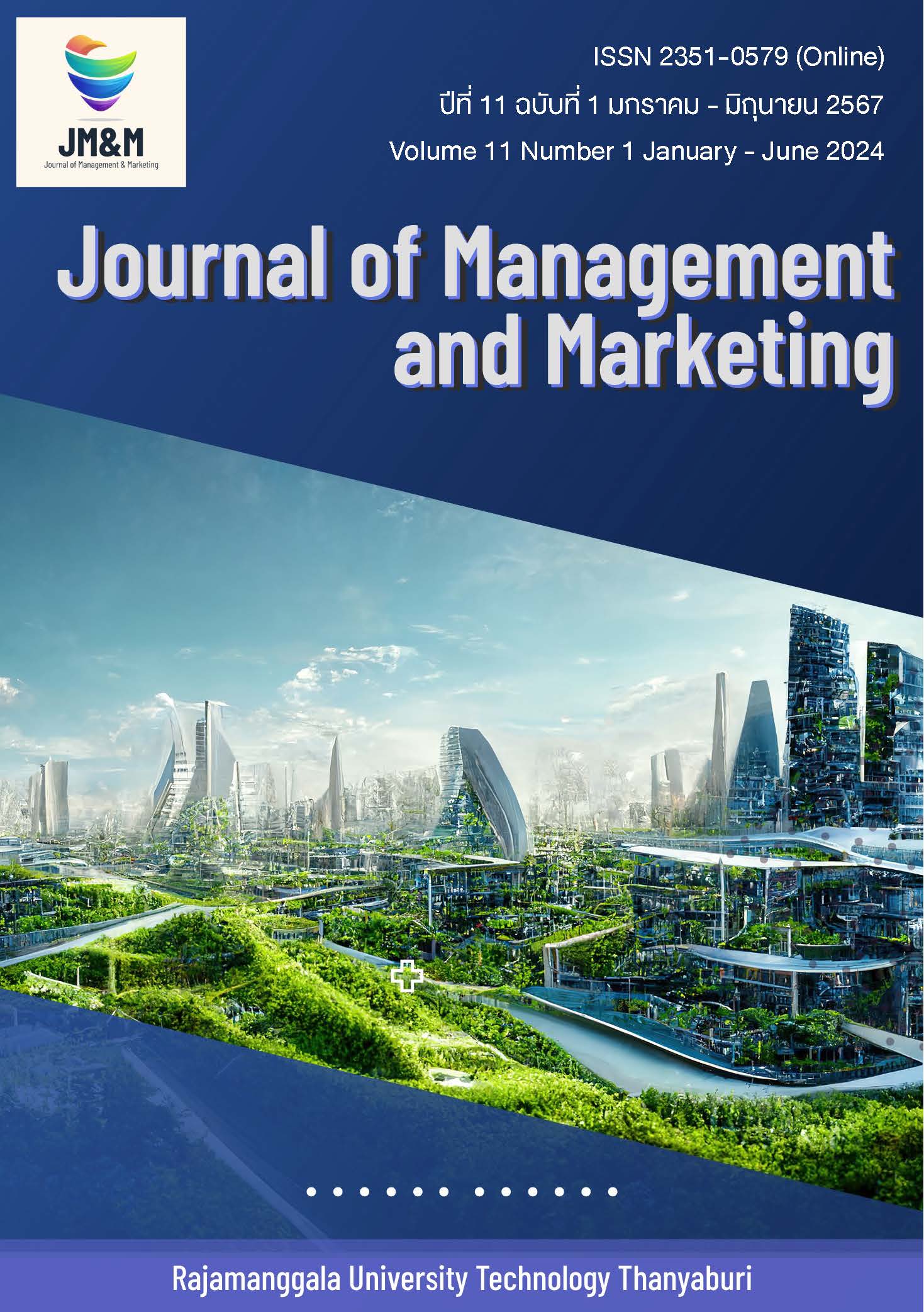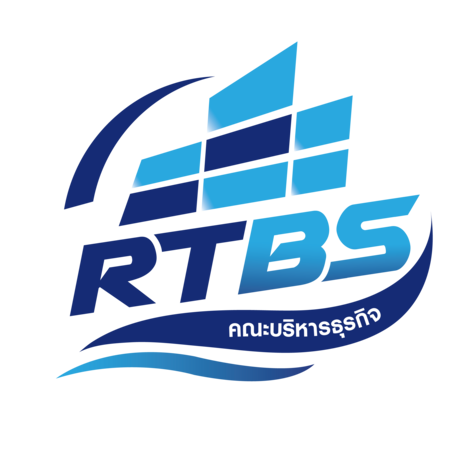อิทธิพลของกลยุทธ์การสร้างตราผลิตภัณฑ์ที่มีต่อความสามารถในการทำกำไรทางการตลาดของธุรกิจเครื่องดื่มในประเทศไทย
DOI:
https://doi.org/10.60101/mmr.2024.268334คำสำคัญ:
กลยุทธ์การสร้างตราผลิตภัณฑ์, ความสามารถในการทำกำไรทางการตลาด, ความสามารถในการแข่งขันทางการตลาด, ความสำเร็จของตราผลิตภัณฑ์, ธุรกิจเครื่องดื่มบทคัดย่อ
การวิจัยครั้งนี้เป็นการวิจัยเชิงปริมาณ มีวัตถุประสงค์เพื่อ 1) ศึกษาอิทธิพลของกลยุทธ์การสร้างตราผลิตภัณฑ์ที่มีต่อความสามารถในการทำกำไรทางการตลาด ความสามารถในการแช่งขันทางการตลาดและความสำเร็จของตราผลิตภัณฑ์ 2) ศึกษาอิทธิพลของความสามารถในการแข่งขันทางการตลาดที่มีต่อความสามารถในการทำกำไรทางการตลาด และ 3) ศึกษาอิทธิพลของความสำเร็จของ ตราผลิตภัณฑ์ที่มีต่อความสามารถในการทำกำไรทางการตลาด ทำการศึกษาในกลุ่มอุตสาหกรรมเครื่องดื่ม เนื่องจากเป็นสินค้าที่มีความแตกต่างกันในคุณลักษณะของผลิตภัณฑ์จากแต่ละผู้ผลิตไม่มากนัก กลยุทธ์ การสร้างตราผลิตภัณฑ์จึงมีบทบาทสำคัญในการสร้างความได้เปรียบในการแข่งขัน โดยมีผู้จัดการฝ่ายการตลาดและผู้อำนวยการฝ่ายการตลาด เป็นผู้ให้ข้อมูลจำนวนทั้งสิ้น 320 ราย โดยการใช้แบบสอบถามเป็นเครื่องมือในการเก็บข้อมูล และใช้เทคนิคการวิเคราะห์เส้นทาง ในการทดสอบสมมติฐาน
ผลการศึกษาพบว่า กลยุทธ์การสร้างตราผลิตภัณฑ์ มีอิทธิพลในเชิงบวกกับความสามารถในการทำกำไรทางการตลาด ความสามารถในการแข่งขันทางการตลาด และความสำเร็จของตราผลิตภัณฑ์ อย่างมีนัยสำคัญทางสถิติที่ระดับ .05 นอกจากนี้ความสามารถในการแข่งขันทางการตลาดมีอิทธิพลต่อความสามารถในการทำกำไรทางการตลาดในเชิงบวกอย่างมีนัยสำคัญทางสถิติที่ระดับ .05 และพบว่าความสำเร็จของตราผลิตภัณฑ์มีอิทธิพลต่อความสามารถในการทำกำไรทางการตลาด อย่างมีนัยสำคัญทางสถิติที่ระดับ .05 เมื่อพิจารณาความสอดคล้องกลมกลืนของโมเดลสมการโครงสร้างและข้อมูลเชิงประจักษ์ พบว่าโมเดลสมการโครงสร้างมีความสอดคล้องกลมกลืนกับข้อมูลเชิงประจักษ์
เอกสารอ้างอิง
กรมพัฒนาธุรกิจการค้า กระทรวงพาณิชย์. (2564). คลังข้อมูลธุรกิจ. สืบค้นจาก https://datawarehouse.dbd.go.th/index.
กัลยา วานิชย์บัญชา. (2557). การวิเคราะห์สมการโครงสร้าง (SEM) ด้วย AMOS (พิมพ์ครั้งที่ 2). กรุงเทพฯ: สามลดา.
Aaker, D. A., Kumar, V. and Day, G. S. (2001). Marketing Research. New York: John Wiley and Sons.
Bagozzi, R. P., and Yi, Y. (1988). On the evaluation of structural equation models. Journal of the Academy of Marketing Science, 16(1), 74-94.
Barney, J. B. (1991). Firm resources and sustained competitive advantage. Journal of Management, 11, 99-120.
Baumgarth, C. (2010). Living the brand”: Brand orientation in the business-to-business sector. European Journal of Marketing, 44(5), 653-671.
Damoiseau, Y., Black, W., & Raggio, R. (2011). Brand creation vs acquisition in portfolio expansion strategy. Journal of Product & Brand Management, 20(4), 268-281.
De Chernatony, L. (2010). Brand management through narrowing the gap between brand identity and brand reputation. Journal of Marketing Management, 15, 157-179.
Dewhirst, T., & Davis, B. (2005). Brand Strategy and Integrated Marketing Communication (IMC): A Case Study of Player's Cigarette Brand Marketing. Journal of Advertising, 34(4), 81-92.
Dierickx, I. & Cool, K. (1989). Asset Stock Accumulation and the Sustainability of Competitive Advantage. Management Science, 35/12 (December): 1504-1513.
Hair, J. F., Jr., Black, W. C., Babin, B. J., and Anderson, R. E. (2010). Multivariate data analysis (7th ed.). Upper Saddle River, NJ: Pearson.
Huang, Y. T., & Tsai, Y. T. (2013). Antecedents and consequences of brand-oriented companies. European Journal of Marketing, 47(11/12), 2020-2041. doi: 10.1108/ejm-07-2011-0371
Hultman, M., Katsikeas, C. S. and Robson, M. J. (2011). Export promotion strategy and performance: The role of international experience. Journal of International Marketing, 19(4), 17-39.
Ille, F. R., and Chailan, C. (2011). Improving global competitiveness with branding strategy. Journal of Technology Management in China, 6(1), 84-96. doi:10.1108/17468771111105677
Jaakkola, M., Möller, K., Parvinen, P., Evanschitzky, H. and Mühlbacher, H. (2010). Strategic marketing and business performance: A study in three European engineering countries. Industrial Marketing Management, 39(8), 1300-1310.
Kaewmungkoon, S., Ussahawanitchakit, P., and Raksong, S. (2016). Marketing excellence strategy and firm survival. The Business and Management Review, 7(5), 347-356.
Keller, K. L. (2003). Strategic Brand Management: Building, Measuring and Managing Brand Equity (2nd ed.). Upper Saddle River, NJ.: Pearson Education.
Kim, H.-b., & Kim, W. G. (2005). The relationship between brand equity and firms’ performance in luxury hotels and chain restaurants. Tourism Management, 26(4), 549-560. doi: 10.1016/j.tourman.2004.03.010
King, C., So, K. K. F., & Grace, D. (2013). The influence of service brand orientation on hotel employees’ attitude and behaviors in China. International Journal of Hospitality Management, 34, 172-180. doi: 10.1016/j.ijhm.2013.03.004
Kotler, P., & Keller, K. (2011). A framework for marketing management (5th ed., Global ed.). Harlow: Pearson.
Kotler, P., and Armstrong, G. (2012). Principles of Marketing (14th ed.), Upper Saddle River, NJ: Pearson Prentice Hall.
Krejcie, R. V., and Morgan, D. W. (1970). Determining sample size for research activities. Psycholological Measurement, 30(3), 607-610.
Lee, C., & Liao, C. (2009). The effects of consumer preferences and perceptions of Chinese tea beverages on brand positioning strategies. British Food Journal, 111(1), 80-96. doi:10.1108/00070700910924254
Mizik, N., & Jacobson, R. (2008). The Financial Value Impact of Perceptual Brand Attributes. Journal of Marketing Research, 45(1), 15-32.
Morgan, N. A., and Rego, L. L. (2009). Brand Portfolio Strategy and Firm Performance. Journal of Marketing, 73(1), 59-74.
Neumeier, M. (2006). The brand gap: How to bridge the distance between business strategy and design: A whiteboard overview (Rev. ed.). Berkekley, CA: New Riders.
Panomjerasawat, J., and Ussahawanitchakit, P. (2014). Brand Equity Orientation and Marketing Performance: An Empirical Investigation of Foods Seasoning and Ingredient Businesses in Thailand. Journal of International Finance and Economics, 14(2), 63-80.
Pansuppawat, W. and Ussahawanitchakit, P. (2015). Brand creation strategy and marketing survival: An empirical investigation of non-alcoholic beverage businesses in Thailand. The Business & Management Review, 7(1), 345-359.
Reid, M., Luxton, S., & Mavondo, F. (2005). The Relationship between Integrated Marketing Communication, Market Orientation, and Brand Orientation. Journal of Advertising, 34(4), 11–23.
Schultz, D. (1998). What’s in a name? Your brand could be your most valuable long-term asset. Industry Week, 247(6), 20-21.
Shang, J., Yildirim, T. P., Tadikamalla, P., Mittal, V., and Brown, L. H. (2009). Distribution network redesign for marketing competitiveness. Journal of Marketing, 73(2), 146-163. doi:10.1509/jmkg.73.2.146
Solomon, M. (2016). Consumer behavior: Buying, having, and being. Boston: Pearson Education.
Suresh, S., Mohanan, P., & Naresh, G. (2011). Brand Success Redefined: An Analysis of the Interrelationships Among Various Brand Dimensions. SSRN Electronic Journal. doi:10.2139/ssrn.1867880
Thipsri, N. and Ussahawanitchakit, P. (2009). An empirical assessment of NPD strategies of Thai electronics business: How do the strategies affect market outcomes. International Journal of Business Strategy, 9(2), 69-90.
Thrassou, A., and Vrontis, D. (2008). Internet marketing by SMEs: Towards enhanced competitiveness and internationalisation of professional services. International Journal of Internet Marketing and Advertising, 4(2/3), 241. doi:10.1504/ijima.2008.017024
Tolba, A., and Hassan,S. (2009). Linking customer-based brand equity with brand market performance: A managerial approach. Journal of Product & Brand Management, 18, 356-366.
Woods, L. (2000). Brands and brand equity: definition and management. Management Decision, 38(9), 662-669.
Worm, S., and Srivastava, R. K. (2014). Impact of component supplier branding on profitability. International Journal of Research in Marketing, 31(4), 409-424.
Yoo, B., & Donthu, N. (2001). Developing and validating a multidimensional consumer-based brand equity scale. Journal of Business Research, 52, 1-14.
ดาวน์โหลด
เผยแพร่แล้ว
รูปแบบการอ้างอิง
ฉบับ
ประเภทบทความ
สัญญาอนุญาต
ลิขสิทธิ์ (c) 2024 วารสารวิชาการการตลาดและการจัดการ มหาวิทยาลัยเทคโนโลยีราชมงคลธัญบุรี

อนุญาตภายใต้เงื่อนไข Creative Commons Attribution-NonCommercial-NoDerivatives 4.0 International License.
บทความที่ได้รับการตีพิมพ์เป็นลิขสิทธิ์ของ ผู้นิพนธ์
ข้อความที่ปรากฏในบทความแต่ละเรื่องในวารสารวิชาการเล่มนี้เป็นความคิดเห็นส่วนตัวของผู้เขียนแต่ละท่านไม่เกี่ยวข้องกับมหาวิทยาลัยเทคโนโลยีราชมงคลธัญบุรี และคณาจารย์ท่านอื่น ในมหาวิทยาลัยฯ แต่อย่างใด ความรับผิดชอบองค์ประกอบทั้งหมดของบทความแต่ละเรื่องเป็นของผู้เขียนแต่ละท่าน หากมีความผิดพลาดใดๆ ผู้เขียนแต่ละท่านจะรับผิดชอบบทความของตนเองแต่ผู้เดียว









